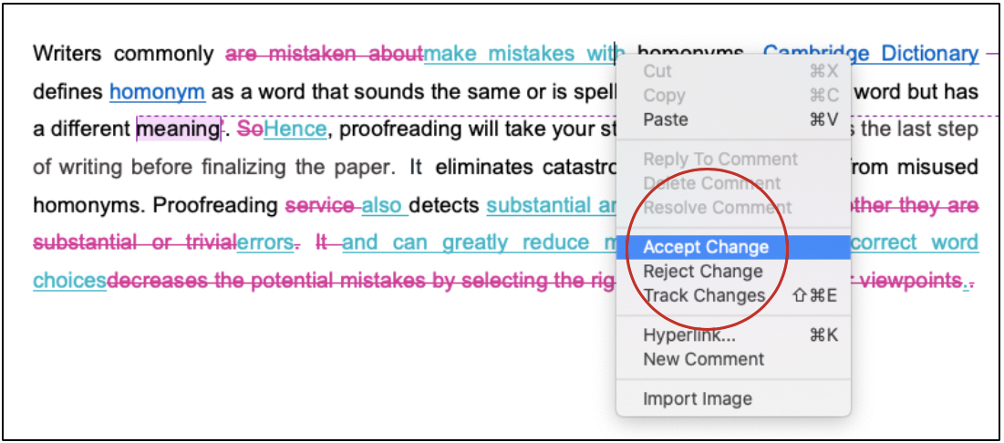Academic referencing and academic citing acknowledge the sources used by authors in their manuscripts. It necessitates the linkage of citations to the list of works cited in a paper. It also gives credit to the sources of information used in the manuscript. Whether it is about writing a book or other academic documents, you first need to learn how to use APA referencing style and format. With the help of citations, readers can easily understand the messages conveyed in an article.

What is APA Referencing Style?
APA referencing style is one of the styles of documentation of sources and published by the American Psychological Association (APA). APA is a writing format and style, which is used for academic papers such as books and journal articles. Here, one point should be remembered this style is especially used for citing real sources within the field of social and behavioral sciences.
Academic referencing and academic citing acknowledge the sources used by authors in their manuscripts. It necessitates the linkage of citations to the list of works cited in a paper. It also gives credit to the sources of information used in the manuscript.
Whether it is about writing a book or other academic documents, you first need to learn how to use APA referencing style and format. With the help of citations, readers can easily understand the messages conveyed in an article. Moreover, the citation also helps you clarify things in a book or article.
Without proper citations, your practice might lead to unintentional plagiarism. The Office of Research Integrity (ORI) clearly highlights that plagiarism is a criminal offense. According to the ORI, plagiarism is considered both the theft or misappropriation of intellectual property and the substantial unattributed textual copying of another’s work.
Publication of an author’s previous work as if it was a newly published one or the use of some of the previous paragraphs of an author without showing any references in the new manuscript are considered the most common types of plagiarism. To see five practical ways to avoid plagiarism, click here.

Without any doubt, you would always like to make your research paper as much authentic as possible. So, you need to learn how to use APA referencing style for writing books and journal articles.
The APA format primarily consists of in-text citation and reference list entry.
APA format in-text citations, which are also called parenthetical citations, are included in the sentence where the information is used. These citations are presented after the quote or paraphrase another work. In-text citations should include the author(s)’ last name(s) and the year of publication only as presented in the following example:
(Freud, 1923) or (Williams & Robin, 2012).
This format identifies and enables readers to locate the full source in the list of references. The in-text citation is a method to present to your target groups where the original idea came from and give credit to the original work. With this, readers understand that you are not the first writer who started the idea. Also, it enables your target group to understand how dated the information may be and allows authors to show that they are using others’ ideas to create a new one. The APA format requires the inclusion of the last name(s) of the author(s) and the year of publication in in-text citations. However, when you need to directly quote a source, you should also include the page number(s) (preceded by “p.”).
Articles with one or two authors include all names in every text citation. Here are some useful examples of in-text citations:
According to a study… (William, 2001).
For direct quotation:
(William, 2001, pp. 23–27).
If the author’s last name of the author is given in the sentence, always place the year in parentheses immediately after the name.
(Mason, 2001).
Mason’s (2001) study shows that
When you have two authors, you must separate their last names with an ampersand (&), not with an ‘and.’
|
(Williams and Robin, 2012) |
(Incorrect) |
|
(Williams & Robin, 2012) |
(Correct) |
APA 6th edition requires separate authors’ last names using commas when you have three or more authors. The last two authors’ last names should be separated by both a comma and an ampersand (in a citation) or “and” (in the running text). Thus, it requires using the word “and” between the authors’ last names within the text and use the ampersand in parentheses. However, this rule has been changed with the 7th edition of the APA Publication Manual.
In APA style, using “et al.,” which is determined by the number of authors and whether it is the first time a reference has been cited in the paper is also important because citing a source with three-five authors takes up a lot of space in the text. Thus, the APA 6th edition needed us to abbreviate the references when using the source for subsequent citations. In such a case, it requires using “et al.,” which means “and others.” Its usage is determined by the number of authors in a particular source and whether it is the first time a reference has been cited in your study. In this way, you do not have to write all the authors’ last names.
In October 2019, the American Psychological Association (APA) introduced the 7th edition of the APA Publication Manual, which replaces the 6th edition published in 2009. The in-intext citation for works with three or more authors is now abbreviated right from the first citation. You only include the first author’s name and “et al.”
|
(Mason, Robin, Parker, & Williams, 2008) |
(Incorrect) |
|
(Mason et al., 2008) |
(Correct) |
|
(Williams et al., 2012) |
(Incorrect) |
|
(Williams & Robin, 2012) |
(Correct) |
To see how and when to use ‘et al.’ in APA in-text citations in detail, click here.
Reference list entry requires listing full publication details alphabetically on the bibliography page, which appears right after the main text. The reference provides all the information that is essential to locate the sources cited in the text.
An APA style reference list or bibliography includes a complete list of references used in the manuscript, including the author(s) name(s), date of publication, and title, among other important information.
A reference list in APA style should start on a new page at the end of the main text.
A reference list in APA style should include all the references used in the in-text citations.
The list should be alphabetically ordered by the name of the first author or by the title of the sources with no author
When there are multiple works by the same author, they are ordered by the year of publication; if the studies are in the same year, they are ordered alphabetically by the title and are allocated a letter (i.e., a, b, c) after the year of publication.
Note that the APA style reference format varies depending on the type of source such as an article in a journal, an article in a periodical, book, book section, conference proceedings, and document from a website.
|
Author’s Last Name, First Initial. Second Initial. (Year of publication). Title of the book. Publishing Company. |
(Important note: The APA 7th edition, unlike the 6th edition, edition requires writing the name of the publisher only; therefore, no location information is required).
|
Wan, T.H. (2002). Evidence-based health-care management. Kluwer Academic Publishers. |
|
Acemoglu, D., & Robinson, J. (2012). Why nations fail: The origins of power, prosperity, and poverty. The Crown Publishing Group. |
APA 7th edition requires including all authors up to and including 20. For 21 or more authors, the first 19 authors should be listed and then the last author. In APA 6th edition, all authors should be listed for 2–7 authors, and the first 6 authors should be listed for 8 or more authors then the last author.
The APA 6th edition required authors to include the publisher’s place when you cite from a print book. The city and state should be included for US-based publishers, the city and country for publishers anywhere else.
However, an update comes with the APA 7th edition. It requires writing the name of the publisher only; therefore, no location information is required.
Also, if there is more than one publisher, APA 7th requires listing them all in the order that they appear, separated by a semicolon. According to APA 6th edition, if there is more than one publisher, the first publisher should be listed only.
Aneshensel, C.S., Rutter, C.M., & Lachenbruch, P.A. (1991). Social structure, stress, and mental health: Competing conceptual and analytic models. American Sociological Review. 56:166-178.
The APA 7th edition requires including the issue number for all journals that have issue numbers.
Also, retrieved from is no longer required. (This applies to all online resources unless a retrieval date is needed).
A web page in APA style is written in this order, in parentheses:
(Year, Month Day).
If the webpage names an individual author in APA style, cite their name first:
Last name, F. M. (Year, Month Date). Title of page. Site name. URL
If the online resource was written by a group or organization, the name of the group or organization should be used as the author. Also, when the author’s and website’s names are the same, omit the website name from the citation:
Group name. (Year, Month Date). Title of page. Site name. URL
When the webpage’s author is not listed, start with the title instead. Besides, add a retrieval date when the page’s content is likely to change over time:
Title of page. (Year, Month Date). Site name. Retrieved Month Date, Year, from URL
The website in the reference list should not be italicized.
DeCoster, J. (2020, January 6). Overview of factor analysis. Retrieved from http://www.stat-help.com/notes.html
With the APA Manual 7th edition, URLs are no longer preceded by “Retrieved from,” unless a retrieval date is needed.
The website name is included (unless it’s the same as the author).
Web page titles are italicized.
|
APA 6th edition |
Bologna, C. (2019, October 31). Why some people with anxiety love watching horror movies. HuffPost. Retrieved from https://www.huffpost.com/entry/anxiety-love-watching-horror-movies_l_5d277587e4b02a5a5d57b59e |
|
APA 7th edition |
Bologna, C. (2019, October 31). Why some people with anxiety love watching horror movies. HuffPost. https://www.huffpost.com/entry/anxiety-love-watching-horror-movies_l_5d277587e4b02a5a5d57b59e |
When a reference is published by an organization, the institution’s name should be cited as the author. Type out the full organization name for the reference list.
First citation:
The new version of the manual indicates that… (the American Psychological Association [APA], 2014).
Subsequent citations:
Furthermore, the same version suggests… (APA, 2014).
Cite multiple sources in the same parentheses and place the citations in alphabetical order, separating them with semicolons.
Several studies showed that … (Acemoglu & Robinson, 2012; Adams et al.,2003, Mason, 1998; Wan 2001)
Arrange two or more studies by the same authors by year of publication. Add alphabetic designators to the year of publication in both the in-text citation and reference list.
(Mason, 2003a, 2003b).
For studies published in different years by the same author, place the years of publication in a chronological sequence separated by commas.
(Williams, 2012, 2013).
Best Edit & Proof expert editors and proofreaders focus on offering manuscripts with proper tone, content, and style of academic writing, and also provide an upscale editing and proofreading service for you. If you consider our pieces of advice, you will witness a notable increase in the chance for your research manuscript to be accepted by the publishers. We work together as an academic writing style guide by bestowing subject-area editing and proofreading around several categorized writing styles. With the group of our expert editors, you will always find us all set to help you identify the tone and style that your manuscript needs to get a nod from the publishers.

You can also avail of our assistance if you are looking for editors who can format your manuscript, or just check on the particular styles for the formatting task as per the guidelines provided to you, e.g., APA, MLA, or Chicago/Turabian styles. Best Edit & Proof editors and proofreaders provide all sorts of academic writing help, including editing and proofreading services, using our user-friendly website, and a streamlined ordering process.
Visit our order page if you want our subject-area editors or language experts to work on your manuscript to improve its tone and style and give it a perfect academic tone and style through proper editing and proofreading. The process of submitting a paper is very easy and quick. Click here to find out how it works.
Our pricing is based on the type of service you avail of here, be it editing or proofreading. We charge on the basis of the word count of your manuscript that you submit for editing and proofreading and the turnaround time it takes to get it done. If you want to get an instant price quote for your project, copy and paste your document or enter your word count into our pricing calculator.
If you need support for editing and proofreading services, contact us. You can also e-mail us or use the 24/7 live chat module to get direct support. We have a 24/7 active live chat mode to offer you direct support along with qualified editors to refine and furbish your manuscript. Alternatively, you can text us through our WhatsApp business line.
Follow us on Twitter, LinkedIn, Facebook, Instagram, and Medium.
For more posts, click here.
For more information about the citation styles and APA style, read the following articles:
The 9 Most Important Changes in the 7th Edition of the APA Manual
How to Present Tables and Figures in APA Style (7th edition)
How to Cite Sources in APA Referencing Style? | With APA 7th Edition Update
This article discusses APA citation style with a brief guide showing how to format a manuscript in APA style. To give you an opportunity to practice proofreading, we have left a few spelling, punctuation, or grammatical errors in the text. See if you can spot them! If you spot the errors correctly, you will be entitled to a 10% discount.
Importance of Citations in Academic Writing
05.03.2022
How to Use ‘‘et al.’’ in APA Style (7th Edition)
28.11.2020
A Complete Guide to MLA In-Text Citations
01.06.2021
MLA Paper Format: How to Format a Paper in MLA Style
31.05.2021
How to Format DOI in APA Style (APA 7th Edition Update)
29.11.2020
How to Cite Web Pages in APA Style (7th Edition Update)
16.12.2020
APA Manual 7th Edition: The 9 Most Important Changes
29.11.2020

The purpose of APA style is to uniform use of elements such as selection of titles, headings, subheadings, citation of references, tone, punctuation, and abbreviations, presentation of numbers and statistics, formatting of tables and figures, and many other elements that are a part of the manuscript. The APA style consists of in-text citation and reference list entry.
Continue Reading
The acronym ‘‘et al.’’ is an abbreviation for the Latin term ‘et alia,’’ meaning ‘‘and others’’ and used in academic in-text citations when referring to a source with multiple authors. Depending on the number of authors a reference has, an APA in-text citation is abbreviated by using ‘et al.’ after the first author’s last name.
Continue Reading
One of the defining aspects of academic writing is that it is research-oriented. Academic authors constantly refer to and review credible literature in their field of study to succor their academic arguments and plausibly divulge the contents of their manuscripts to the readers. However, as much as it is necessary for academics to refer to trustworthy sources, correctly mentioning them in-text or in the bibliography is equally important. This is where the concept and importance of citations come into the picture.
Continue Reading